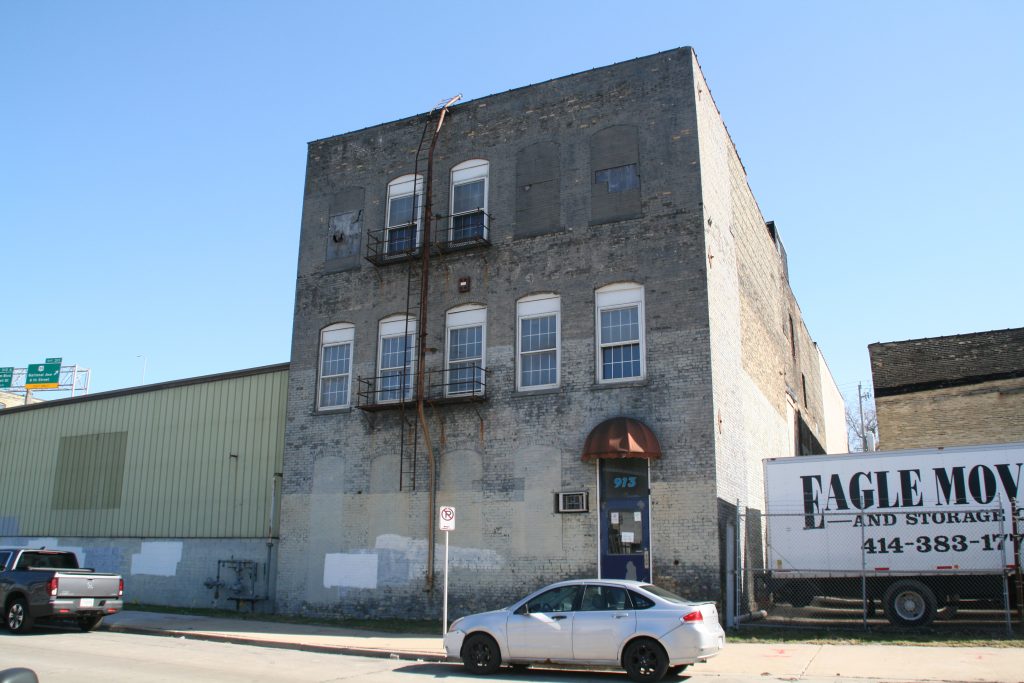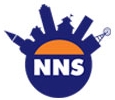Should City Preserve Industrial Properties Near 11th and Bruce?
Study will look at land-use options for preserving century-old industrial district.
An oft-overlooked section of Walker’s Point will be subject to a new land-use plan from the Department of City Development.
The area in question — largely comprised of a cluster of century-old industrial buildings — is bounded by Interstate 43/94 (9th) and S. Cesar E. Chavez Dr. (16th) and the Menomonee River and W. National Ave. Many of the buildings are located along W. Bruce St. or W. Pierce St.
“I think in short, no,” said DCD planner Monica Wauck Smith.
Development to the east in Walker’s Point has resulted in a number of industrial buildings finding new uses as commercial or residential properties, or being demolished. DCD and the council have largely supported that transition, and in many cases the zoning code is set up to enable that transition. For example, New Land Enterprises proposed to demolish a long-time industrial building and replace it with a new apartment along S. 5th St. It needs a variance because of design aspects of the new building, not because of the change in use.
But to the west of the High Rise Bridge, the city is expected to attempt to hold to its industrial heritage.
The area is currently viewed as an extension of the Menomonee Valley, so much so that it is included within the borders of the Menomonee Valley Partners business improvement district. The organization will fund half of the study costs. The city will contribute $12,500 to the $25,000 effort.
And while it’s largely industrial today, the underlying zoning isn’t quite that clear.
“Currently, that area’s kind of a hodge podge of different industrial zoning districts,” Wauck Smith said.
The study could recommend changing the zoning on a number of properties to encourage (or prohibit) future uses.
SUR Natural Health Brands, makers of the ZYN line of turmeric-infused beverages, is proposing to redevelop the 32,508-square-foot, three-story building at 913-939 W. Bruce St.
The company uses a co-packer to make its products, sold in more than 7,000 stores, but needs the facility for its warehousing and office functions.
The firm, according to cofounder Qasim Khan, has six marketing employees and would have between five to 10 marketing employees “in the near term.”
The first floor would be used for the warehouse. The upper two floors would be divided for SUR and other tenants. Each floor contains approximately 7,200 square feet of leasable space, according to floor plans submitted to the city. The SUR offices are currently located in two different buildings in Shorewood.
To enable the use the property needs to be rezoned from “Industrial – Heavy” to “Industrial – Commercial.”
“[Industrial – Commercial] gives us a new tool in the toolbox that we think is appropriate here,” said city planning manager Sam Leichtling of the relatively new designation.
Another test case could soon arrive. Astronautics is selling its former plant at 1412-1426 W. National Ave., and its two other properties in other areas of the city are poised for a change in uses.
The committee unanimously endorsed the SUR proposal. The full council is scheduled to vote on both measures on July 12.
Nearby Investments
The study won’t just look at how the area is today, but what it could become after a major environmental cleanup is completed.
Wauck Smith said the plan would account for the cleanup and infill of the Burnham Canal. Once a shipping corridor, the 17-foot-deep canal ceased to be a navigable waterway in the 1980s when the City of Milwaukee constructed a fixed bridge across the canal at S. 11th St.
Miller Compressing entered into an agreement with the EPA in 2008 to study cleanup options for the canal as part of the Superfund alternative approach program.
A 2011 cleanup plan called for soils to be removed and at least three feet of sediment added west of the 11th Street bridge. But the Milwaukee Metropolitan Sewerage District joined the effort to expand the cleanup effort and public benefits.
The canal is now being filled to a much greater extent from its western terminus east to the High Rise Bridge, an approximately 3,000-foot-long stretch. The original Miller plan would have left the canal looking similar to its current state, while the MMSD plan will add a substantial amount of fill to accommodate native vegetation and a natural wildlife habitat.
The $7.93 million project is being funded by a series of grants in addition to Miller’s original multi-million dollar commitment. In 2018, the Wisconsin Department of Natural Resources secured a $4 million grant to support the effort.
The canal was created in the 1870s for J.L. Burnham & Sons, a company owned by Jonathan L. Burnham that produced Cream City brick from Menomonee Valley clay. For more on the plan, see our 2021 coverage.
Legislation Link - Urban Milwaukee members see direct links to legislation mentioned in this article. Join today
If you think stories like this are important, become a member of Urban Milwaukee and help support real, independent journalism. Plus you get some cool added benefits.
Related Legislation: File 220308
Eyes on Milwaukee
-
Church, Cupid Partner On Affordable Housing
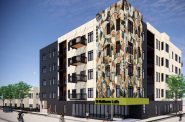 Dec 4th, 2023 by Jeramey Jannene
Dec 4th, 2023 by Jeramey Jannene
-
Downtown Building Sells For Nearly Twice Its Assessed Value
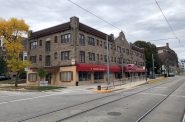 Nov 12th, 2023 by Jeramey Jannene
Nov 12th, 2023 by Jeramey Jannene
-
Immigration Office Moving To 310W Building
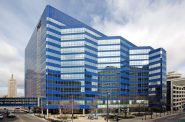 Oct 25th, 2023 by Jeramey Jannene
Oct 25th, 2023 by Jeramey Jannene


